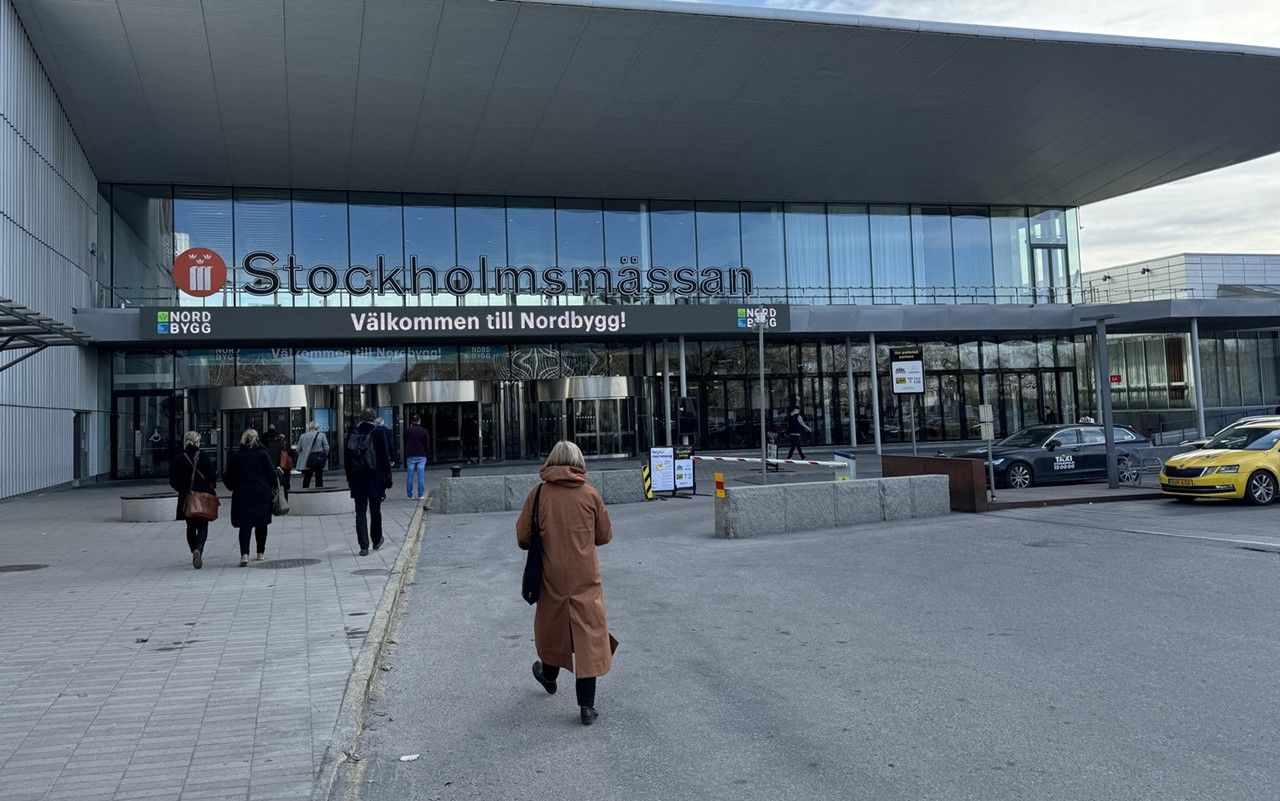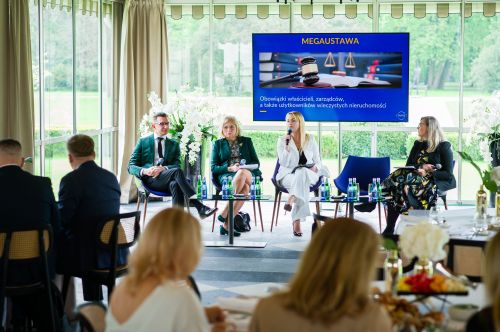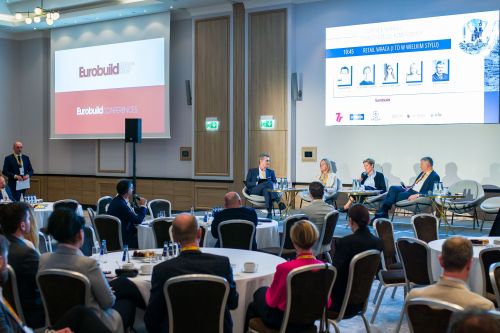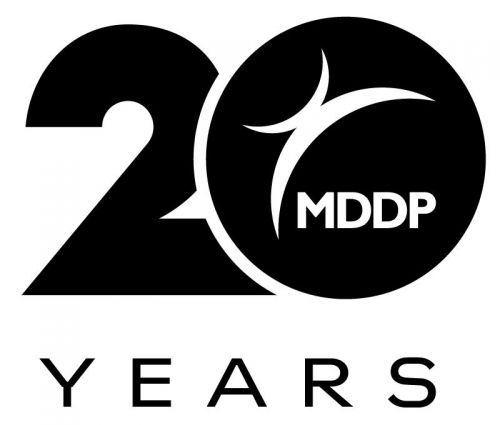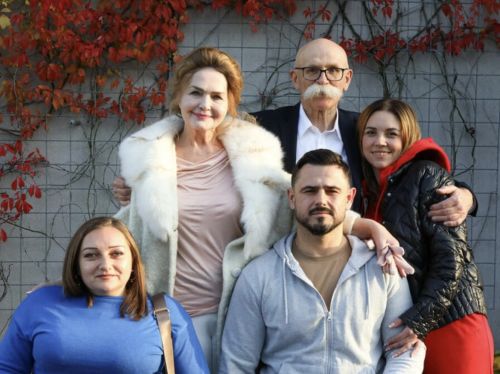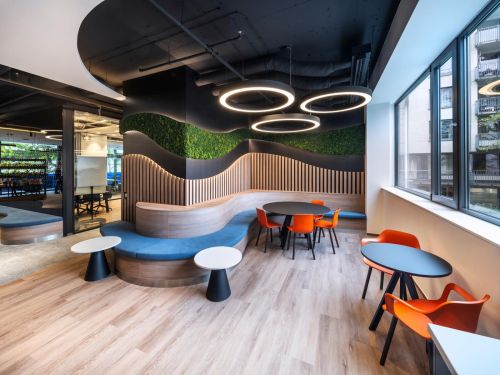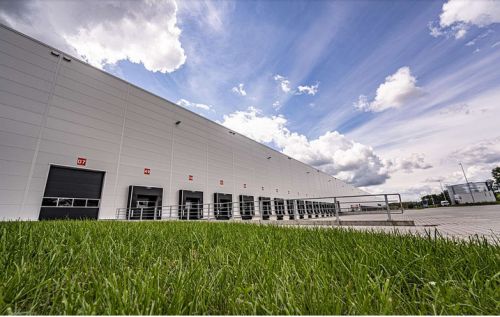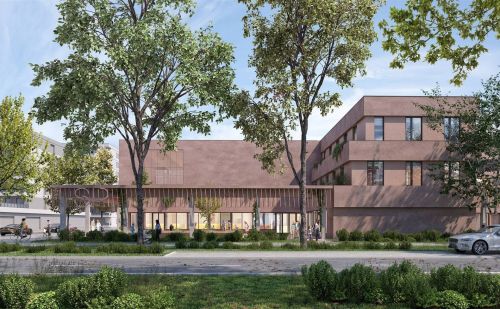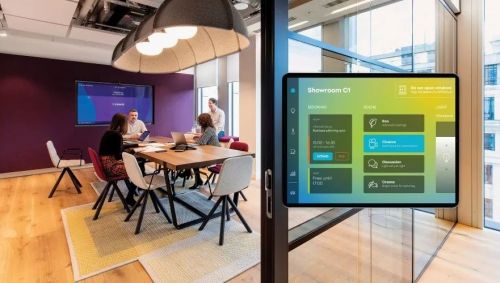The double life of Renata
Small talk
I’m going to start with a question that’s not very typical for ‘Eurobuild’. How did you get into painting?
Renata Kusznierska, the Poland regional manager of CRM Students: Two years ago, I took a training course on holotropic breathing, which is a psychotherapeutic technique for achieving deeper levels of consciousness. It was a week-long intensive course and 80 people from all over Europe took part in it. During one of the sessions, I experienced something remarkable. I saw and felt the energy in my visions in the form of a golden red light. Then every time I closed my eyes I had the feeling that many different colours were flowing through me. It was an amazing experience. When I finished the course, I started to paint and experiment almost every day for half a year.
What was the technique you devised?
I call it ‘the flowing colour technique’. It’s inspired by the Mexican painter David, who was an excellent artist, revolutionary and the creator of gigantic murals. I was searching for my own way to express myself, so I was wondering how I could pour what I feel out onto a canvas – and when I came across this technique, I fell in love with it. You don’t have complete control over the final effect, which – rather incredibly, given my controlling personality – involves a resignation to the process. It’s also fascinating how the different paints mix and interact with each other. Even though they come from the same manufacturer, when you mix them with thinner, it always results in something different that I didn’t expect. I don’t want this to sound crazy, but to a large extent it’s my paints that paint the pictures.
For how long had you wanted to be a painter?
There’s always been that spark in me – that longing to paint; but my life led me down a completely different path. I sacrificed all my energy and passion to develop the real estate market and I was quite successful in this. Now that my children have grown up, I have more time for myself, so I can concentrate on what really brings me joy. Painting allows me to show the world another part of my personality, which I had kept hidden until now. I have always thought about how I could grow as a person. Even during the most intense periods when I was overwhelmed by projects, I would always find time for a meditation workshop, a healthy cooking class, or an opportunity to study Buddhist philosophy. This spiritual development became the source of my strength, which helped me to deal with the pressure of work. And working in the real estate sector is quite a challenge. The pressure is due to projects worth millions of euros with the risks involved in not being able to secure the financing and losing clients. So this is, indeed, all very stressful. However, I’ve learnt how to deal with it.
How would you describe your creative process?
I believe that we are entirely surrounded by a form of energy – and my pictures reflect precisely that. I place my intentions within a 120x100 cm space and they paint the picture themselves. I lend them my hand, eyes and time so that the final form can appear. I create my works with positive feelings, such as well-being, harmony and creativity. Around all this a colour palette appears that leads me into the process. I believe that this interacts energetically with the viewer. If we do something with our intentions, others are able to feel it and then draw from it in their homes or offices.
What do you show through your art?
I show certain forms and energetic impulses, but I avoid leading the viewer in a particular direction. I want everyone to discover the value and meaning in my paintings for themselves. My long search has led me to abstraction as a form of self-expression because I see in it a way to reach into our deeper experiences and touch the potential viewer.
How do you manage to combine your creativity with such an intense career?
It really is a challenge for me to combine my passion for painting with a demanding job in the real estate sector. Even though these two areas of life might seem completely different, I am still able to find a harmony between them. I work professionally until 6 pm and then I start painting late in the evening. I can’t create anything in the middle of the day, because to paint the way I want, I need to achieve a particular state of mind and get out of the part of my brain that does the management, works on Excel sheets and solves problems. The muse comes to me when I relax. At around 10 pm, I put away my paints and fall into a trance and then suddenly it’s 3 or 4 am in the morning.
So what do your colleagues think about your creative exploits?
They all support me and my boss has always rooted for me. However, I did wonder about what the reaction would be from others working in the sector. But many people I knew came to my exhibition, some of whom I hadn’t seen for years – and the reception was fantastic. I was very happy that after two years of working under a pseudonym I could finally exhibit my work under my own name. Being offered more exhibitions has also made me very happy. In June, my work will be appearing in the Off Piotrkowska Center in Łódź and it will also be displayed as part of an exhibition in Milan in September. My dream is for my paintings to be exhibited in offices. Although art is slowly making its appearance in real estate, paintings for interiors are always chosen to match the furniture or the flooring. But for a painting to live, the choice of the work cannot be determined by the colour of the carpet or the furniture. Then it would just be part of the decor – but a painting has to be more than this.
Interview: Anna Zamyłka
Renata’s work is currently on display at the ‘Flow and Change’ exhibition in the Domoteka interior design centre in Warsaw until May 22nd.












